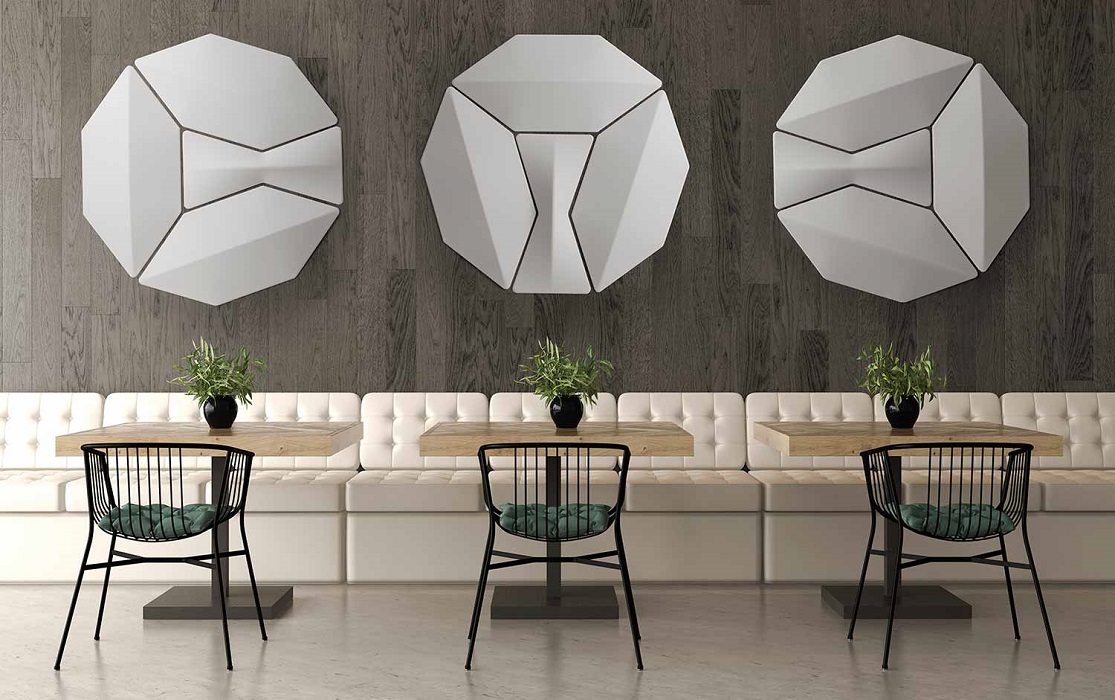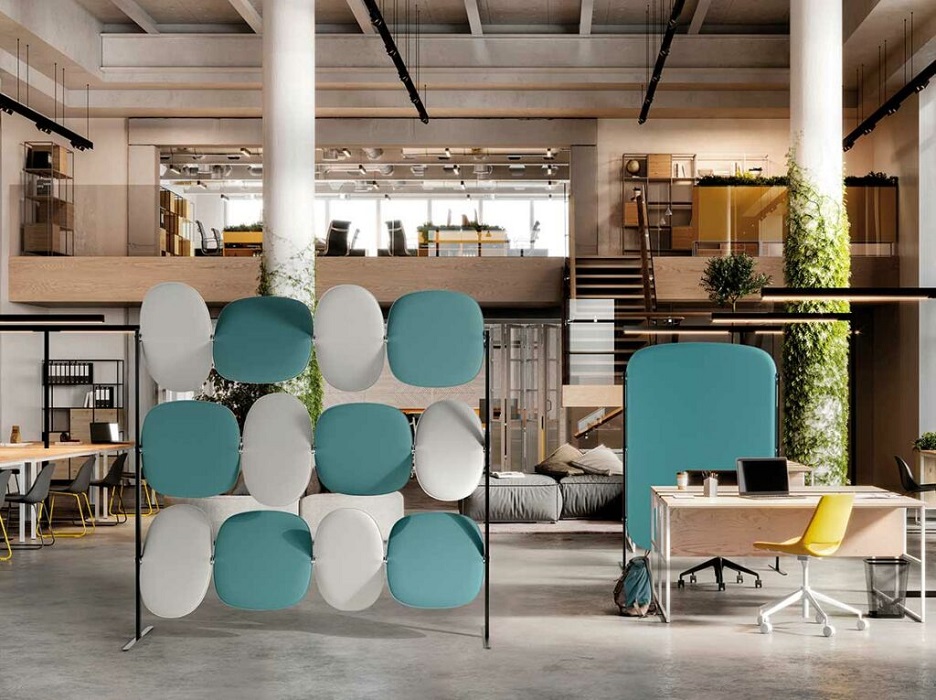
How to Acoustically Correct an Environment
How do you acoustically correct a room?
To acoustically correct a room, it is appropriate to intervene with appropriate sound-absorbing solutions.
Let us first look at some basic concepts.
What is sound absorption?
Sound absorption is the ability of a material to absorb sound and retain it, preventing it from “bouncing back” and giving rise to the annoying reverberation.
What does acoustic correction mean?
Thus, acoustic correction means the installation of sound-absorbing material inside an enclosed room in order to retain sound and limit its reflection on room surfaces.
Are sound absorption and sound insulation the same thing?
No. Sound absorption is very different from sound insulation in that it is not capable of interrupting the entry and exit of sound between multiple rooms (thus isolating), but it performs the function of absorbing reverberation within the room, making sounds more definitive and intelligible.
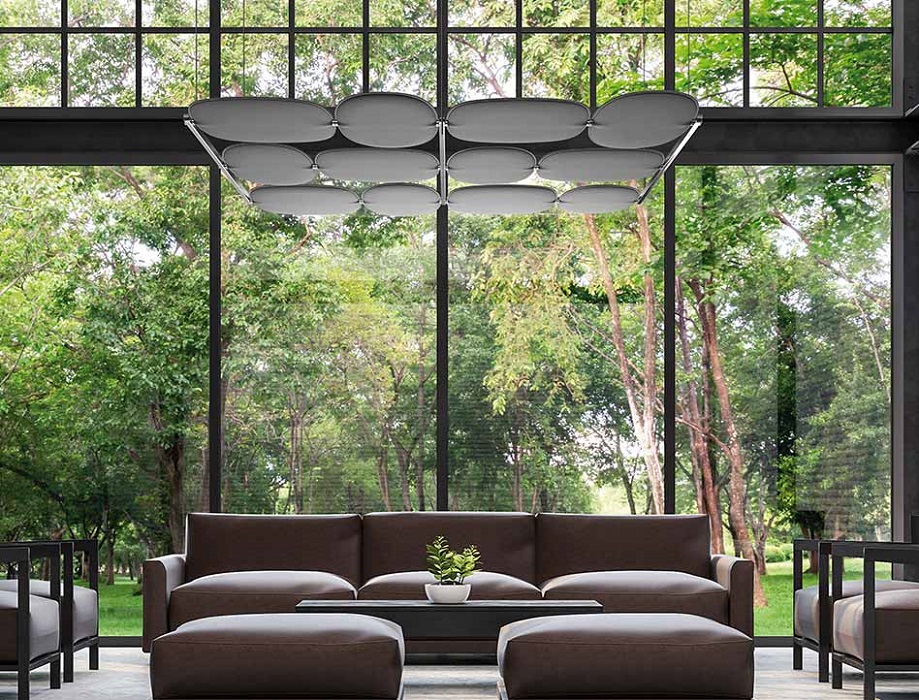
To acoustically correct a room there are numerous solutions that are more or less impactful on the existing furniture.
Among these the best known and most widely used are certainly sound-absorbing panels.
Sound-absorbing panels come in an infinite number of shapes and colors and can be applied anywhere: to walls, ceilings, suspended from above, resting on the floor or top, but also applied to glass. They then become pictures, chandeliers, room dividers and much more.
Added to these are sound-absorbing fabrics that can be used for the creation of curtains and upholstery made to design.
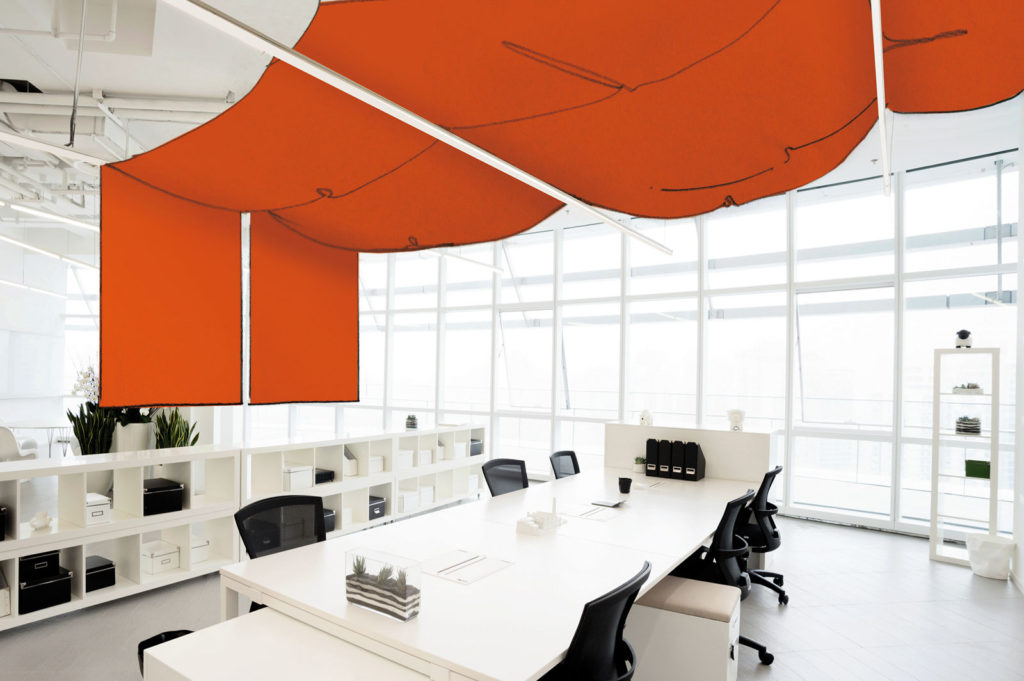
Last but not least are sound-absorbing elements. This category includes seating made of sound-absorbing fabrics and design objects made for the dual purpose of decoration and acoustic correction. An example of this are sound-absorbing sofas used in the relaxation area for creating individual seating and small “isolated” gathering spots.
Which sound-absorbing solutions are most efficient?
There are no more or less efficient or more or less absorbent solutions. The environment first must be studied by evaluating the size and amount of “reflective” surfaces present. At this point through the use of software it is possible to calculate the reverberation time, that is, how many seconds the sound takes to decay. From here the amount of the chosen sound-absorbing solution to be installed is defined.
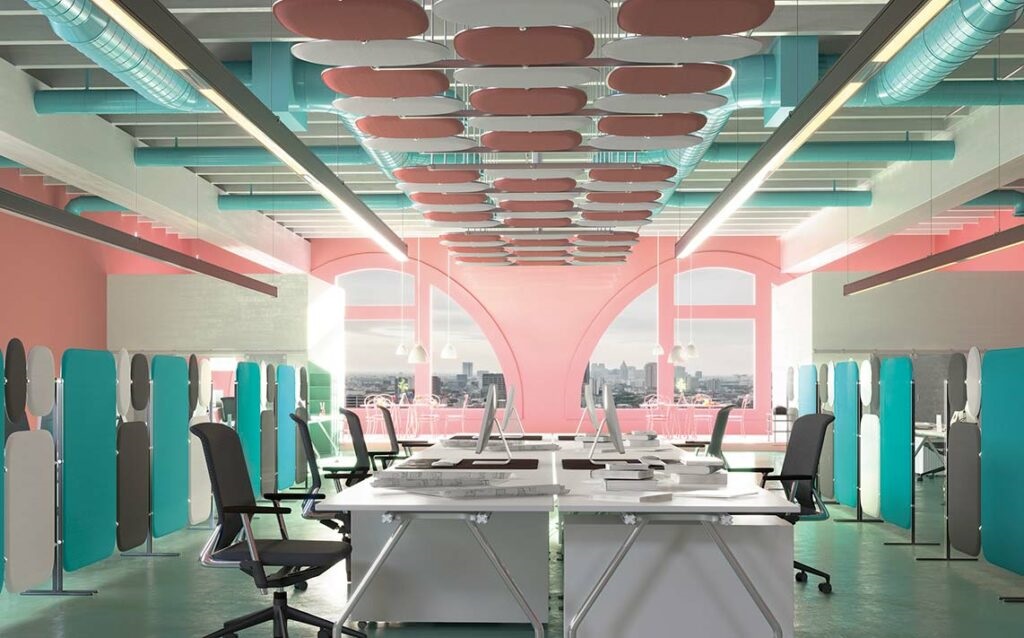
Eliminating glare in private spaces but especially in the workplace and premises is very important in order to ensure proper comfort for users, who are otherwise subject to confusion and stress.
How to acoustically correct the office environment
In the office, the problem of reverberation is very common, but it is not always decided to take action, to the detriment of workers’ productivity and well-being.
There are numerous acoustics issues within offices, but undoubtedly they mainly concern open-plan spaces. Here, in fact, the voices of those who confront colleagues, those who make phone calls, and those who greet clients overlap. A constant background noise is created that disturbs concentration but also communication.
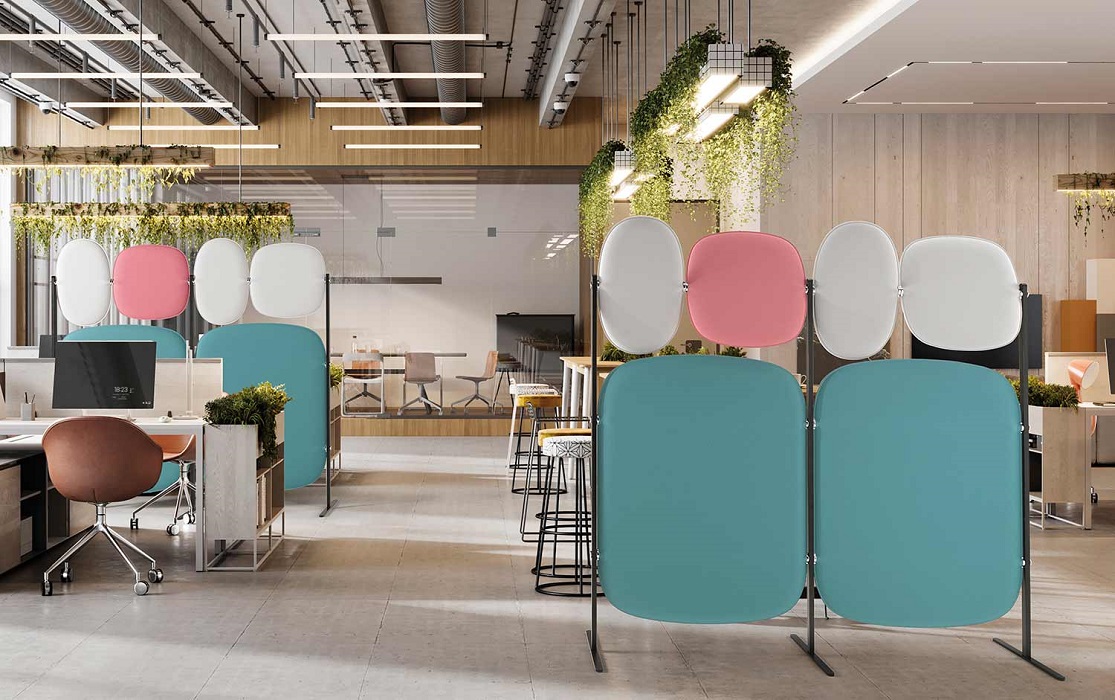
In this case, the most commonly used solutions are sound-absorbing partitions, installed between stations. By means of this type of panels it is possible to eliminate reverberation while ensuring privacy.
But there are also numerous types of sound-absorbing panels installed on the ceiling, capable of drawing innovative configurations through the inclination of the panels themselves, not random but designed for better acoustics.
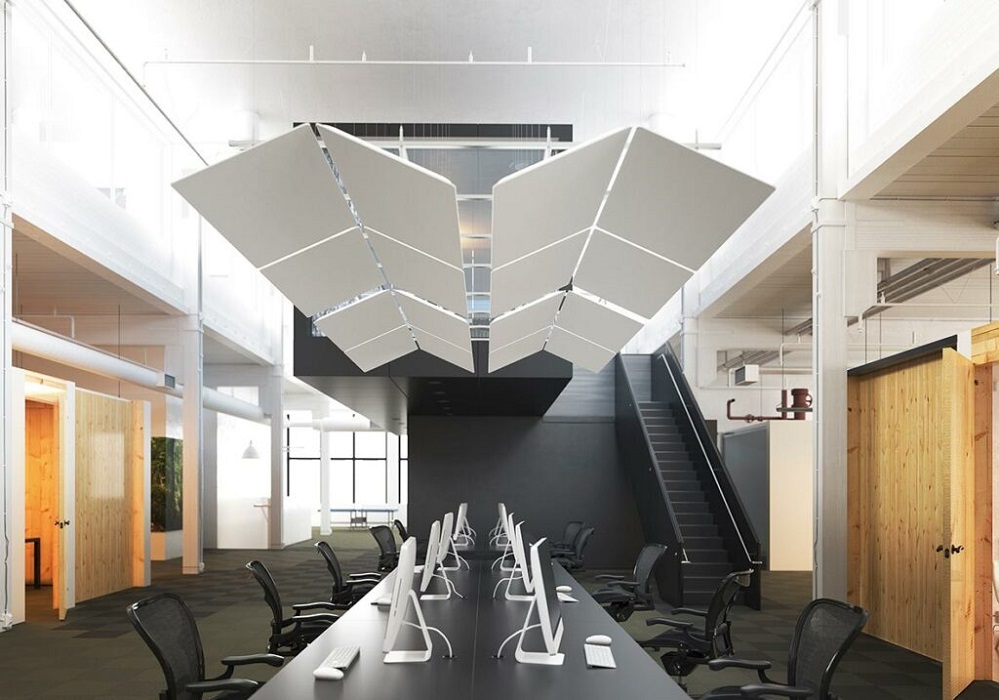
How to acoustically correct the restaurant
Among the noisiest public environments we find the restaurant. Pleasant and relaxing place that can turn into a real nightmare if the noisy background does not allow communication between those who are seated at the same table.
A rather common situation in public places, which could be solved through targeted acoustic correction, without doing any masonry work in already furnished rooms.
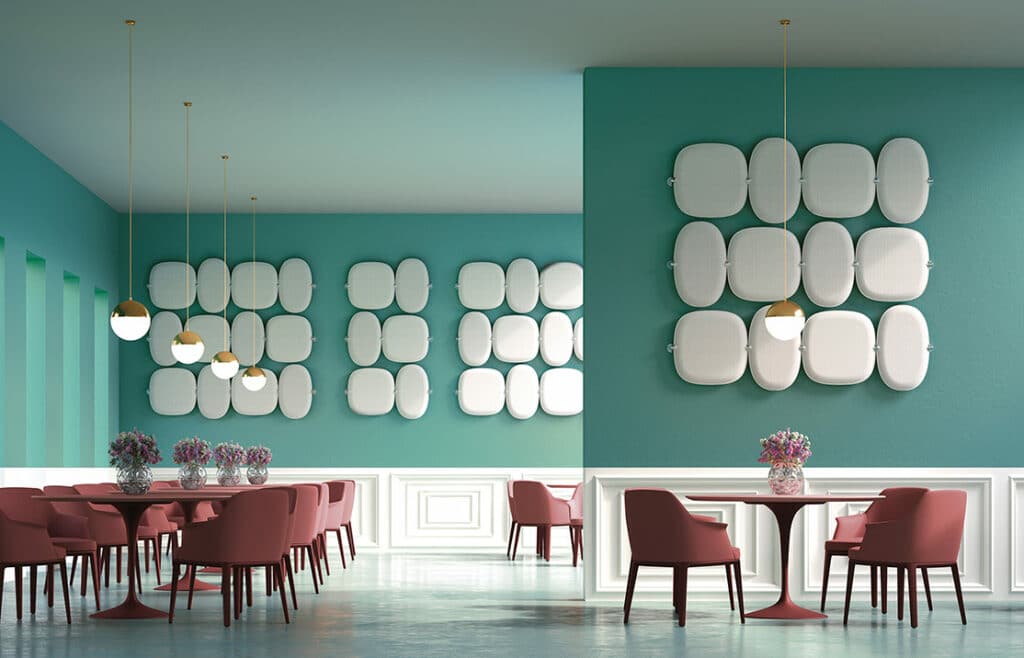
Thanks to the infinite number of sound-absorbing solutions, it is possible to create innovative and artistic wall compositions that can completely refresh the room. At the same time there are acoustic comfort systems that are also useful for other functions. One example is sound-absorbing designer partitions, which modulate sound by dividing restaurant areas, creating true reserved zones. But also sound-absorbing chandeliers and curtains.
